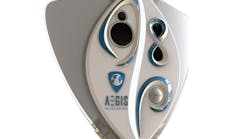Social Distancing AI Suite enables retailers, manufacturers, schools, and other organizations to restore stakeholder trust in the safety of their work environments.
Pro-Vigil accomplishes this by using AI-driven video monitoring technology to measure compliance with the CDC COVID-19 prevention guidelines around social distancing, occupancy limits, and face-mask usage. When the system detects unsafe conditions in a workplace, managers can use this information to remediate the problem by redirecting traffic flows, expanding the use of safety signage, altering schedules, etc.
Pro-Vigil’s remote video surveillance system can analyze digital video data to identify areas where CDC guidelines are not being effectively implemented. This gives users the intelligence they need to adapt processes and policies to reduce opportunities for virus spread. Specifically, Pro-Vigil’s cameras can help with three common CDC guidelines:
- Social distance monitoring – Pro-Vigil’s cameras can be programmed to measure the space around individuals to detect when the six-foot rule is violated. This can provide users with information on potential “trouble spots,” so they can reevaluate the best way to direct the flow of foot traffic to avoid “clustering.”
- Occupancy management – Pro-Vigil’s advanced video technology can automatically count building occupants, which can help maintain occupancy control.
- Face mask detection – Pro-Vigil’s integrated object recognition can detect the use of face masks. This can help leaders identify how strictly mask policies are being followed, so they can determine if they need to post more signs or take other corrective action.
The system delivers CDC compliance information through a daily scorecard, which shows exactly how an organization is doing in regard to following social distancing, occupancy, and face-mask guidelines. If a problem area is detected, users can drill down to learn more about the issue–where it’s happening, at what time of day, and who is involved, for example–allowing them to adapt their safety plans for the best possible results.







